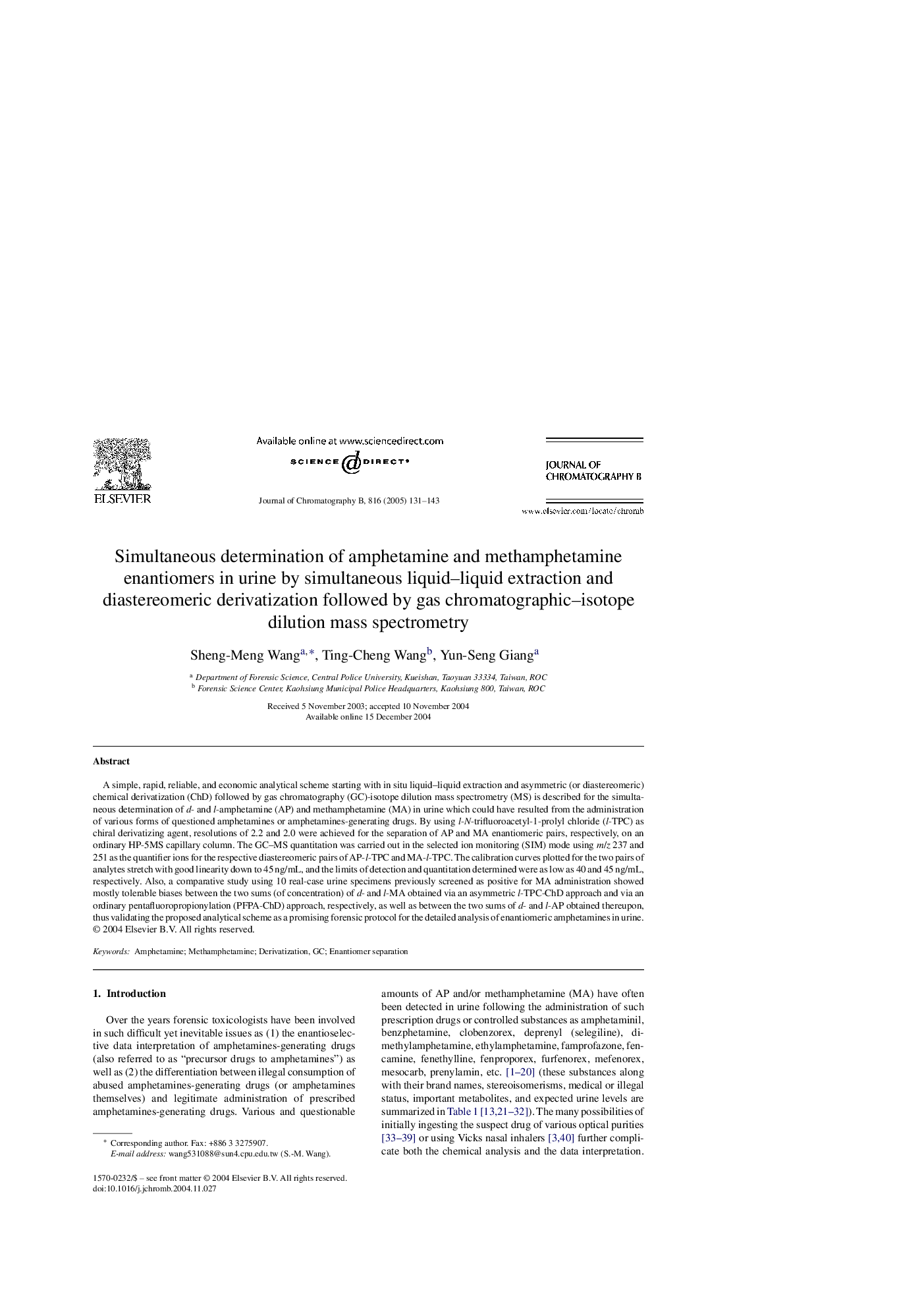| Article ID | Journal | Published Year | Pages | File Type |
|---|---|---|---|---|
| 9753358 | Journal of Chromatography B | 2005 | 13 Pages |
Abstract
A simple, rapid, reliable, and economic analytical scheme starting with in situ liquid-liquid extraction and asymmetric (or diastereomeric) chemical derivatization (ChD) followed by gas chromatography (GC)-isotope dilution mass spectrometry (MS) is described for the simultaneous determination of d- and l-amphetamine (AP) and methamphetamine (MA) in urine which could have resulted from the administration of various forms of questioned amphetamines or amphetamines-generating drugs. By using l-N-trifluoroacetyl-1-prolyl chloride (l-TPC) as chiral derivatizing agent, resolutions of 2.2 and 2.0 were achieved for the separation of AP and MA enantiomeric pairs, respectively, on an ordinary HP-5MS capillary column. The GC-MS quantitation was carried out in the selected ion monitoring (SIM) mode using m/z 237 and 251 as the quantifier ions for the respective diastereomeric pairs of AP-l-TPC and MA-l-TPC. The calibration curves plotted for the two pairs of analytes stretch with good linearity down to 45Â ng/mL, and the limits of detection and quantitation determined were as low as 40 and 45Â ng/mL, respectively. Also, a comparative study using 10 real-case urine specimens previously screened as positive for MA administration showed mostly tolerable biases between the two sums (of concentration) of d- and l-MA obtained via an asymmetric l-TPC-ChD approach and via an ordinary pentafluoropropionylation (PFPA-ChD) approach, respectively, as well as between the two sums of d- and l-AP obtained thereupon, thus validating the proposed analytical scheme as a promising forensic protocol for the detailed analysis of enantiomeric amphetamines in urine.
Related Topics
Physical Sciences and Engineering
Chemistry
Analytical Chemistry
Authors
Sheng-Meng Wang, Ting-Cheng Wang, Yun-Seng Giang,
